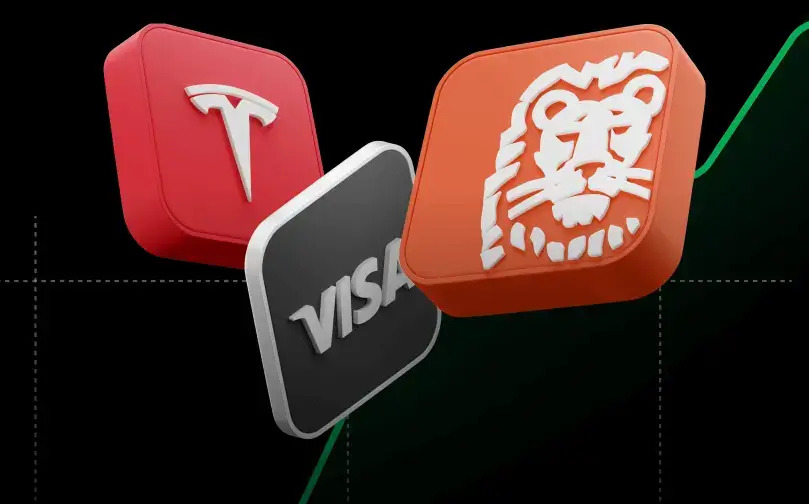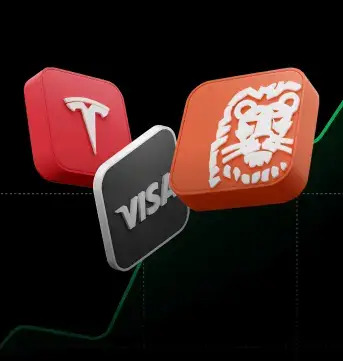Risk management should be an essential part of your trading strategy. Learn the basics of risk management and how to apply it to your trading plan.
In this lesson, you’ll learn:
- Why risk management is a crucial part of trading
- What the elements of a successful trading strategy are
- What reward:risk ratios are and why they could support your strategy
Risk management is one of the key concepts to long-term success on the financial markets - it’s also one of the most overlooked or underrated aspects of trading. But why is risk management so important, and how can you implement it in your own strategies?
You could be the most talented trader in the world with a natural eye for investment opportunities and still blow your account with one bad call without proper risk management. No matter how good you are, or how experienced you are, you’re still going to incur losses. Even the best traders in the world suffer losing trades - it’s part and parcel of trading. That’s why risk management is so important to your trading.
Risk management rules are easy to grasp - even for beginners - but they can be challenging to actually follow, because all sorts of emotions are involved when real money is on the line.
Before we move onto specific risk management techniques, let’s look at how money management makes up a crucial element of a successful trading strategy.
Elements of a successful trading strategy
A winning strategy normally consists of three crucial elements:
- A trading system with an edge: the consistent application of the rules which govern a particular strategy, such as specific entry and exit points or always trading in the direction of the prevailing trend. Maybe you use simple moving averages to help identify a new trend as early as possible, and a stochastic indicator to help determine if it’s safe to enter a trade after a moving crossover. You could also use the RSI as an extra confirmation that helps determine the strength of a trend. Whatever it is, your trading strategy needs to be unique to you - after all, you’re the one using it - and then applied to your trades.
- Controlling your emotions: if you’ve tested your strategy on both a demo and real account, you may notice a difference in results. This is because when real funds are involved, psychology plays a key part. Emotions like fear, greed, or excitement can stop you from sticking to your plan, creating potentially negative results. As a general rule, it’s considered good practice to let your profits run and cut your losses early. Keeping your emotions in check and sticking to your trading plan can help with this.
- Money management: a crucial part of your strategy that specifies the size of the position, the amount of leverage used and any Stop Losses and Take Profit levels. Good money management is a vital part of trading successfully over the long term. It helps to maximize any profits while minimizing any losses. It also prevents from taking too much risk.
As you can see, proper consideration of these elements will play a strong role in your ability to trade successfully. If you’re only using two out of three elements above, sooner or later you may experience a setback that could have been avoided. One of the keys to trading is staying ‘alive’ for as long as you can.
So, what elements make up good money management? Let’s have a look at some techniques that can help control your risk:
- The size of your position
- Hedging - taking multiple positions at once in opposing markets
- Trading during certain hours
- Stop Losses and Take Profit levels
- Knowing when to take losses
Let's look at an example where one of these elements is being largely ignored. In this example, let’s say your account funds are $5,000 and you sell EUR/USD with a trade size of 4.59 lots and leverage of 100:1. You decide not to put a stop loss on this trade. You are utilising most of your account funds in this one position ($4,998.51), giving yourself little leeway for any negative price movement. Every pip move would result in a profit or loss of $45.90, without a stop loss order.
Let’s see what happens next. Some data is released and markets react by strengthening the euro, which rallies over 50 pips against the USD. This move puts the trade in a loss of $2,245 in a matter of minutes, which is half of your funds and leaves only a part of your money to rebuild your account. Before you can decide what your next move will be - whether to cut your losses, add a stop loss to prevent further losses, or reduce the position size - another move of 50 pips against you occurs, meaning you incur another loss of $2,245. That’s a total loss of $4,490 for a 100 pip move against you.
This trade is a clear example of a position that uses no stop losses and how it could be dangerous to your account.
Managing the risk:
As we’ve mentioned above, even the best traders suffer a loss at some point. It’s part and parcel of trading. The key is to limit your losses to a more manageable level. This way, you’ll find that you’re able to stay in the market for longer, increasing your chances of having more successful trades. One way that you could strike the right balance between reward and risk is to stick to a reward:risk ratio such as 2:1 or even 3:1, where your targeted profits are always double that of your maximum losses. So even if you suffer three losing trades, you’ll only need two profitable ones to ensure your total profits outnumber your losses if you stick to this reward:risk ratio. Although it’s not a general rule to follow, it can help us to visualise a specific approach to risk management.
Let's look at two traders that are both starting with $10,000 and utilising a 2:1 reward risk ratio, but apply very different levels of money management in their trading. The first trader uses a very aggressive approach, risking 60% of his capital on each trade, and seeking to take profit at 120%. The second trader is much more conservative, and only risks 5% of his account funds targets in profit of 10%. For simplicity, let’s say that each trader has the same set of ten trades, and that every second trade is profitable.
![]()
These tables show the trading results of two traders using different levels of risk management.
Despite the fact that both strategies had equal rates of success, the same initial capital and the same 2:1 reward risk approach, because of a very different money management style, the final results differ significantly. The first trader’s aggressive approach resulted in a total loss of 47% whilst the second trader enjoys almost 25% total profit at $12,462. So you can see how a little adjustment to your approach to risk management could give you healthier returns.
Crucial part of trading:
As shown above, risk management could be a crucial part of trading. An experienced trader knows how much he or she can risk, but as a beginner you should do everything possible to avoid severe losses. Losses are a part of trading and are unavoidable, but it’s essential to know how to deal with them. Managing profits is another aspect. A successful trader has to find a balance between both outcomes of a trade - he or she maximizes the profit while minimizing the loss.




